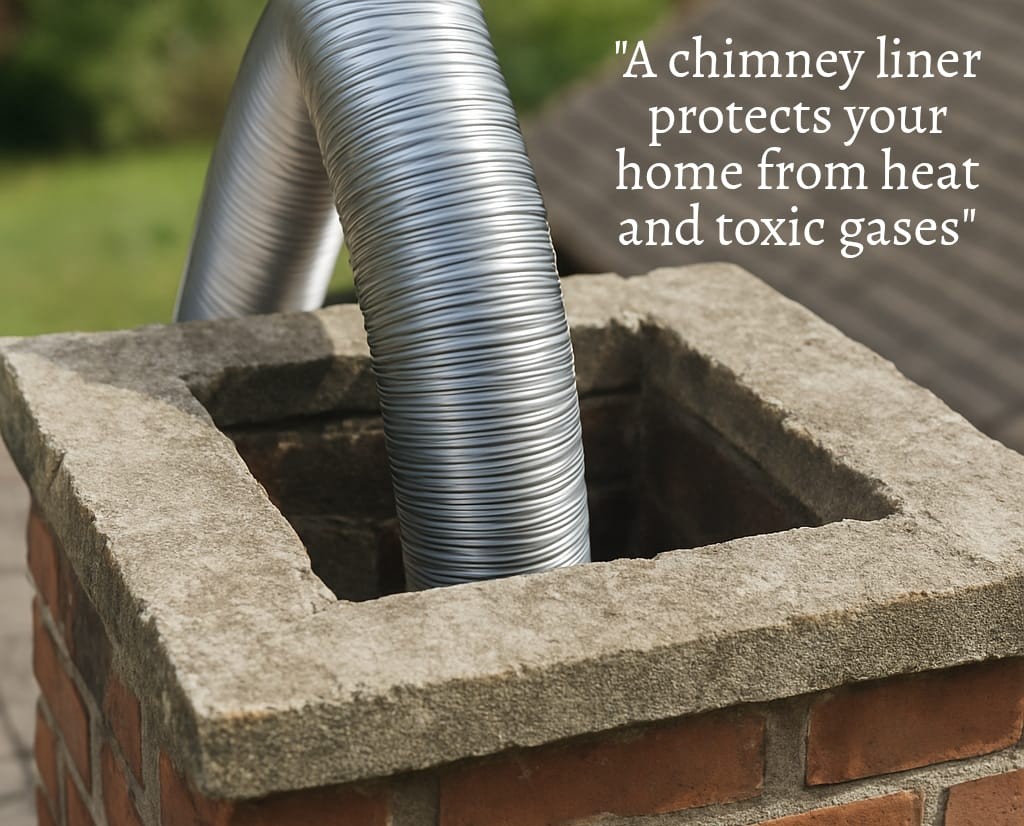
When you picture a cozy fire crackling away on a cold evening, the last thing you want to worry about is the hidden danger lurking behind the flames. That’s where a Chimney Liner steps in, acting like an unsung hero within your chimney. Most homeowners don’t realize it, but this simple barrier can make all the difference between a safe, warm night and a potential disaster. If you’ve ever wondered how your house stays protected when you light the fireplace, it’s time to uncover the important role a Chimney Liner plays in fire prevention.
Key Features: What Makes a Chimney Liner Essential?
Imagine your chimney as a tunnel channeling smoke, gases, and high temperatures directly above your roof. Without a proper liner, the bricks and mortar inside can crack, allowing dangerous fumes and heat to seep into your home’s walls. A chimney flue liner—often made from stainless steel, clay, or even special ceramics—creates a smooth, protective pathway for everything moving up and out of your fireplace.
The main features of a quality chimney liner include:
- Heat Resistance: Liners are built to handle extreme temperatures, far hotter than what your chimney bricks alone can withstand.
- Chemical Defense: They stand up against corrosive byproducts from burning wood or gas, stopping acids and moisture from eating away at your chimney’s structure.
- Seamless Venting: The smooth surface helps smoke and gases exit quickly, reducing the buildup of creosote—a sticky, flammable substance that’s a leading cause of chimney fires.
- Custom Fit: Liners can be tailored to fit any chimney, whether it’s part of an old historic house or a modern build, ensuring there are no gaps for trouble to sneak through.
With these features, a chimney liner acts as a silent guardian, working behind the scenes every time you enjoy your fireplace.
Safety: The Chimney Liner’s Shield Against Fire Risk
Keeping your home and family safe is probably your top priority, and the chimney liner plays a starring role in that mission. When a fireplace is in use, the temperatures inside the chimney can soar, especially when burning wood. Over time, the intense heat and chemicals can weaken the bricks and mortar holding your chimney together.
Here’s where the chimney liner comes to the rescue. By forming a solid, heatproof barrier between the fire and your home’s structure, it stops flames or embers from escaping through tiny cracks. This is crucial—without it, even a small flaw in the brickwork could let sparks slip through and ignite wooden beams or insulation inside your walls.
“A good chimney liner is like a sturdy raincoat for your home—keeping the dangerous stuff out and giving you peace of mind when the weather turns stormy.”
On top of that, chimney liners help prevent carbon monoxide—a colorless, odorless, and deadly gas—from leaking back inside your living room. They guide all those fumes safely above your roof, where they can dissipate harmlessly. In short, every time you light a fire, your liner is quietly working overtime to keep your home secure.
Cost: Is Installing a Chimney Liner Worth It?
When you start looking into chimney maintenance, you’ll quickly notice that installing or replacing a liner isn’t the cheapest upgrade. But let’s consider what you’re really paying for: peace of mind, safety, and the protection of your biggest investment—your home.
| Chimney Liner Material | Estimated Lifespan | Average Installation Cost | Fire Protection Level |
| Stainless Steel | 15–25 years | $900–$2,500 | Excellent |
| Clay Tile | 30–50 years | $1,000–$3,000 | Good |
| Ceramic/Cast-in-Place | 50+ years | $2,500–$5,000 | Superior |
While the upfront price might feel steep, compare it to the potential cost of repairing fire or smoke damage—or worse, rebuilding after a house fire. Regular inspection and proper chimney repair are small investments that can save you thousands in the long run. Plus, many homeowners’ insurance policies may even offer discounts for homes with recently installed or updated chimney liners.
Emergency Service: What To Do If You Suspect Chimney Trouble
Sometimes, even the best chimney liners can run into problems—like cracks, blockages, or wear and tear over many years. If your fireplace starts to smoke up your living room, or you notice strange smells, don’t wait to take action. Quick response is key!
Here’s a simple step-by-step guide if you think something’s wrong with your chimney liner:
- Stop Using Your Fireplace: The first step is to stop burning anything until you know it’s safe.
- Call a Professional: Reach out to a certified chimney technician for an inspection. Most offer 24/7 emergency chimney service in case you need urgent help.
- Don’t DIY: Chimney liners aren’t a weekend project. Specialized tools and experience are needed to diagnose and fix issues safely.
- Schedule Regular Checks: Even if everything seems fine, an annual checkup can catch problems before they turn into hazards.
Acting fast can help you avoid costly repairs and, more importantly, keep your family out of harm’s way.
Conclusion: A Small Upgrade with Huge Benefits
To sum it up, a Chimney Liner is one of those home features that often goes unnoticed—until it’s needed most. By protecting your house from fire risk, guiding dangerous gases safely outside, and saving you money on potential repairs, this simple addition is worth every penny. Don’t wait for a close call to make your chimney a priority. Take the time to ensure your liner is in top shape, and you’ll enjoy peace of mind every time you relax by the fire.
Read More: Chimney Sweep



